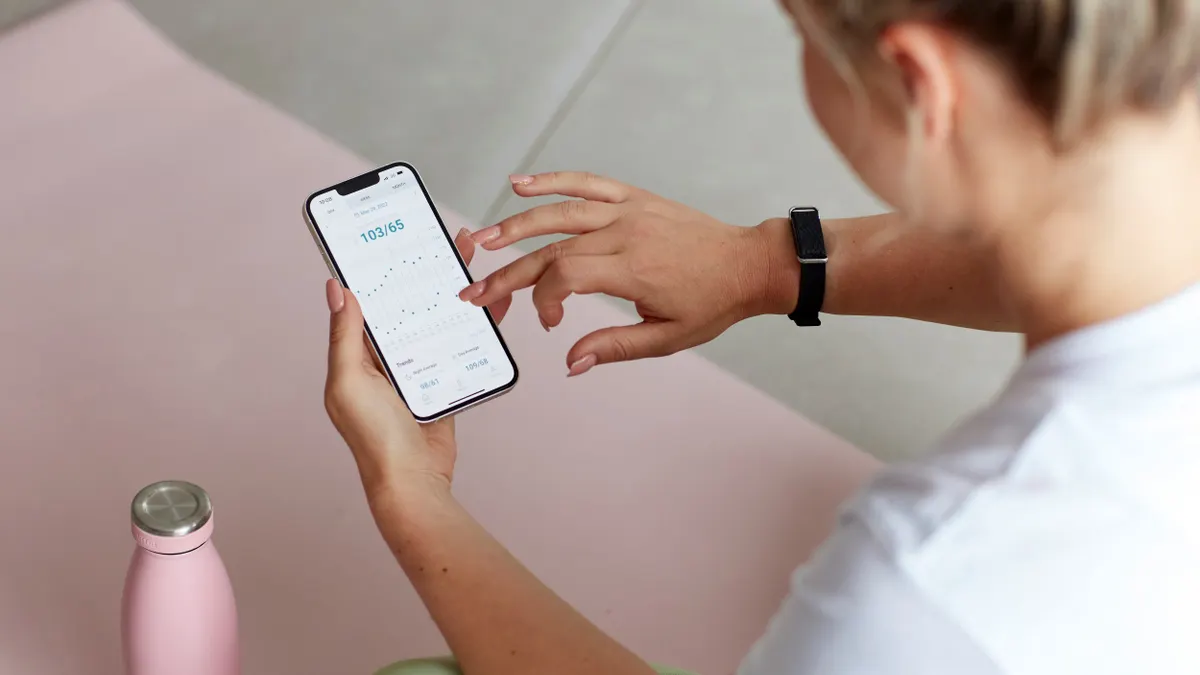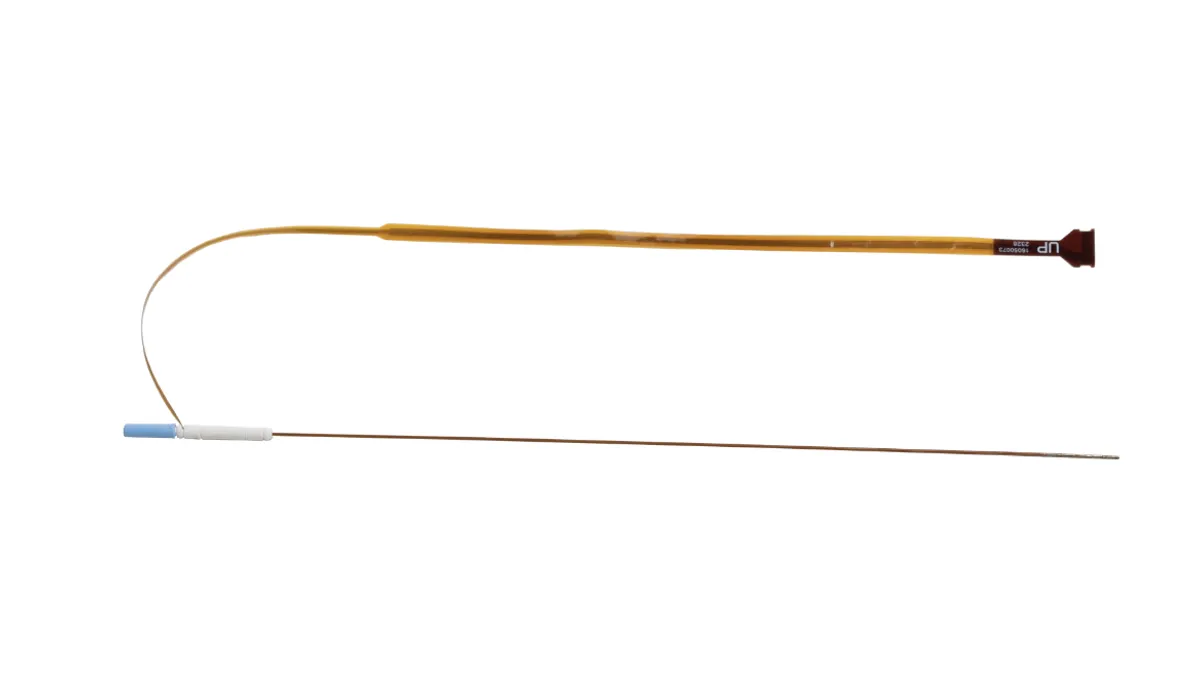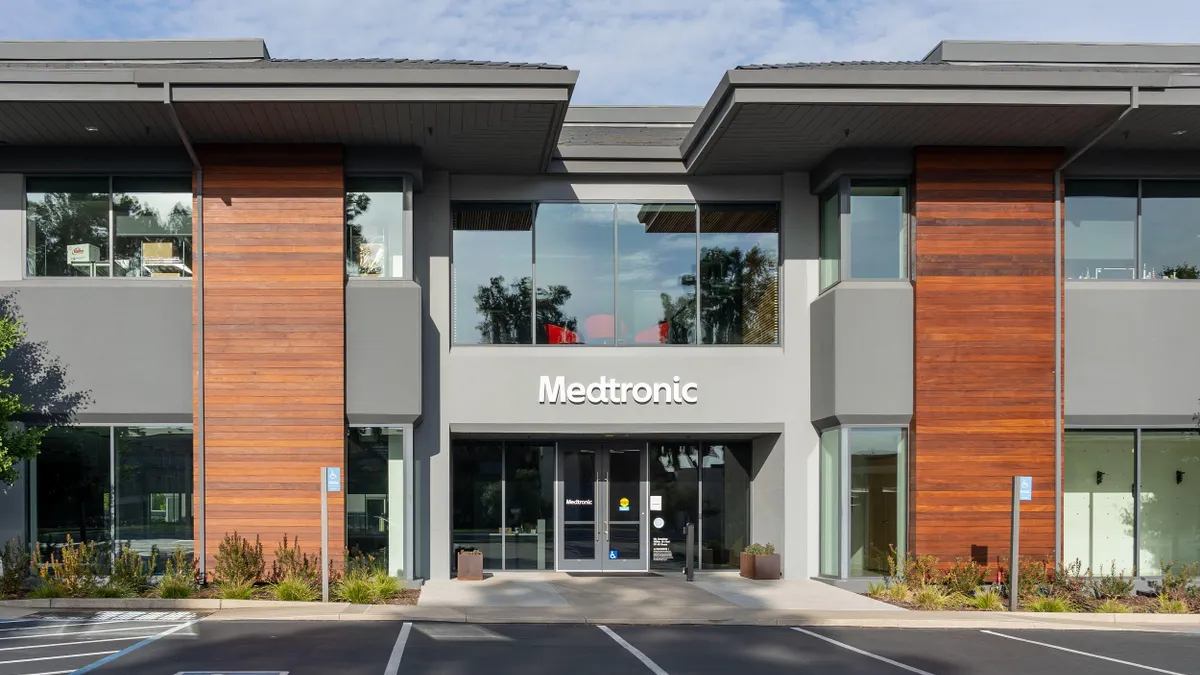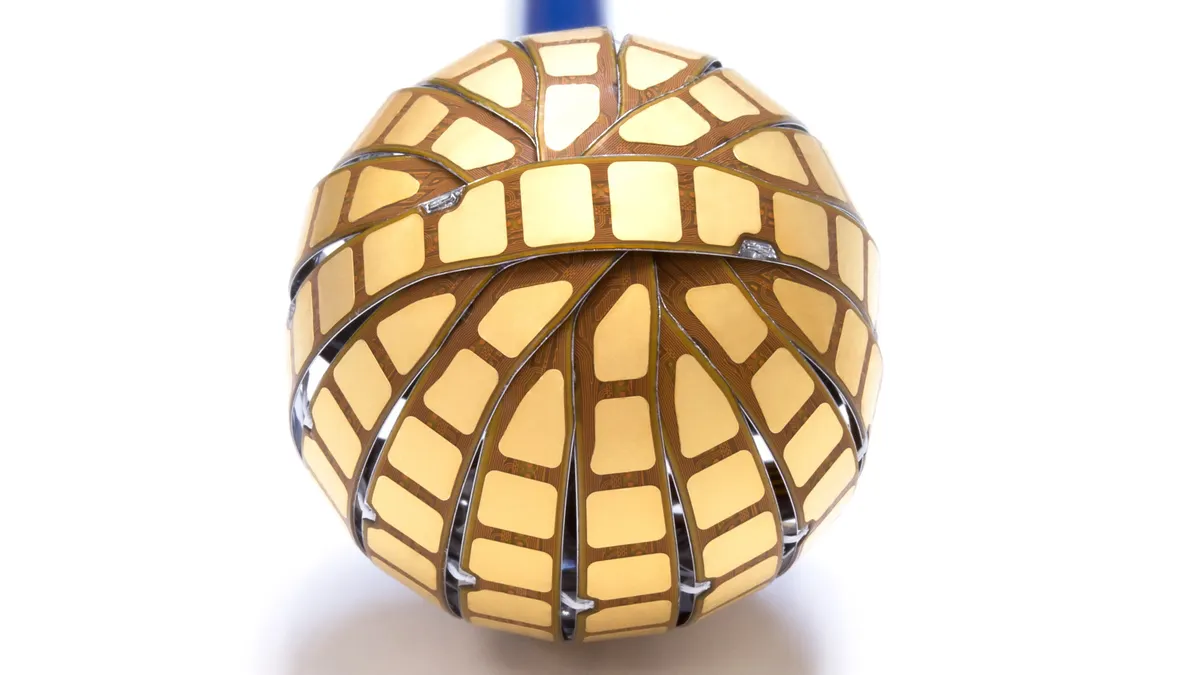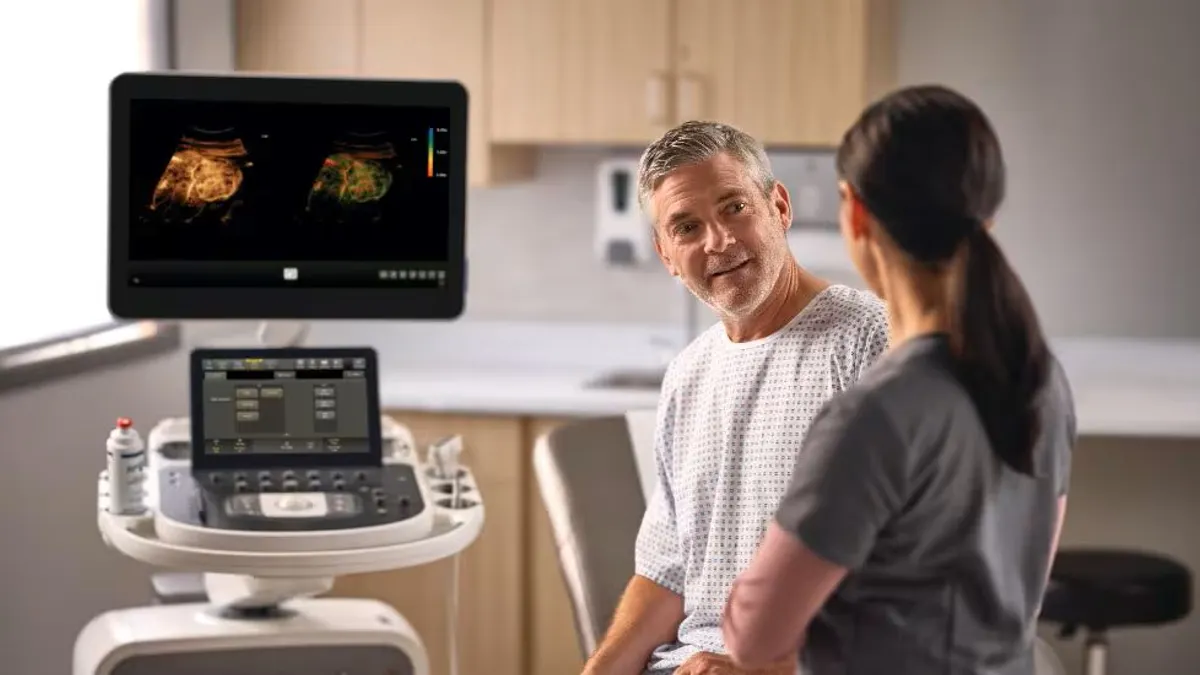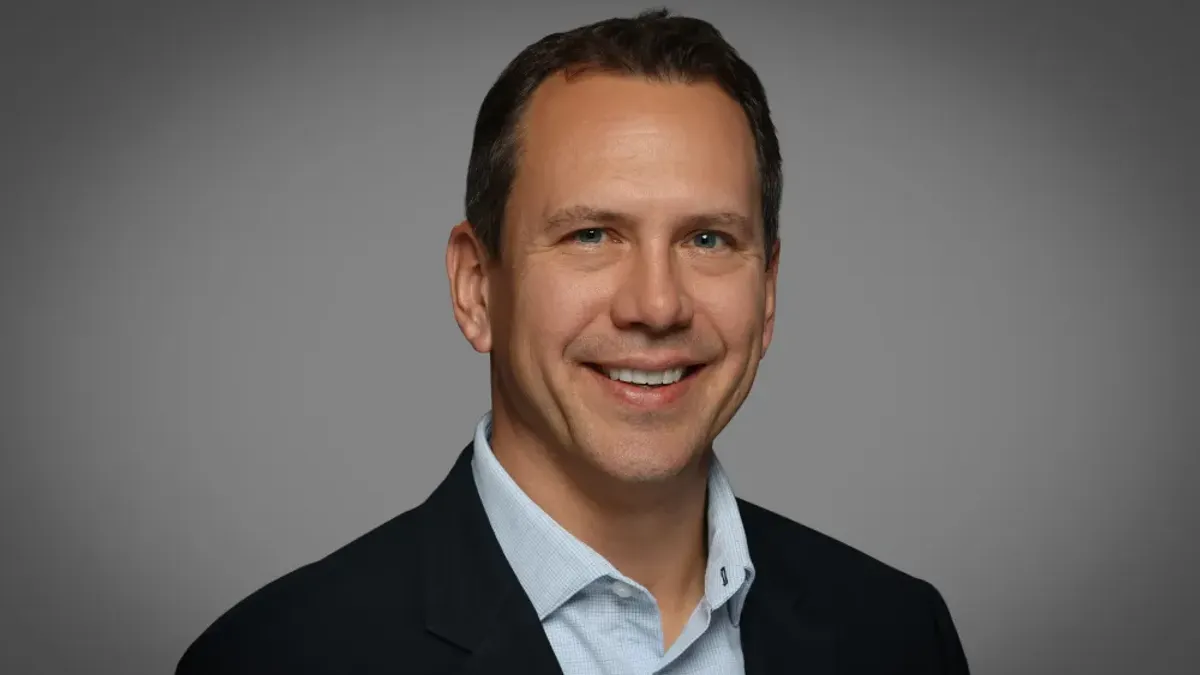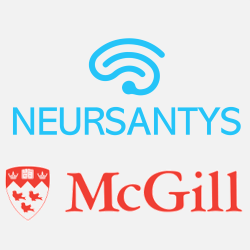In July, the Food and Drug Administration authorized the first over-the-counter cuffless blood pressure monitor.
The Hilo Band, made by Aktiia, uses an optical sensor to continuously track blood pressure. The wrist-based device must regularly be calibrated using a blood pressure cuff, according to the FDA’s 510(k) summary.
Aktiia has been selling the device in Europe after receiving a CE mark in 2021, and the company plans a U.S. launch in 2026.
Josep Solà, Aktiia’s co-founder and chief technology officer, spoke with MedTech Dive about the process of developing a cuffless blood pressure monitor and getting it cleared for over-the-counter use.
This interview has been edited for length and clarity.
MEDTECH DIVE: Where did your interest in cuffless blood pressure monitoring come from?
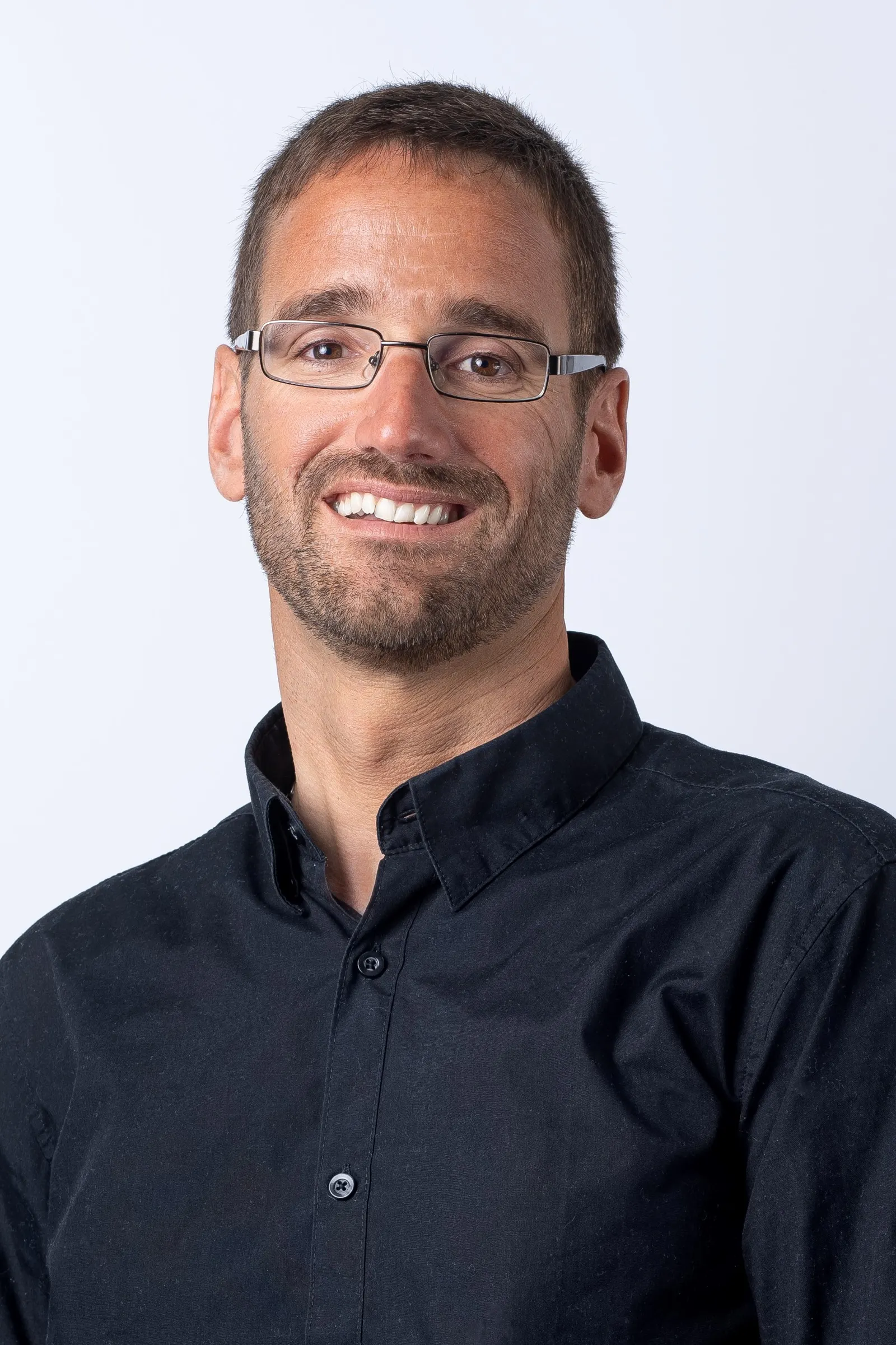
JOSEP SOLÀ: I started in Switzerland in 2004 in a public company that was founded by [Swiss watch manufacturers] decades ago. At that time, there was no Apple Watch — wearables were not known at all. And that particular group was exploring if we could integrate optical sensors into watches.
Personally, in my family, there's a lot of hypertensive people, and I've seen my grandma going through medications and measuring with a cuff every day since I was a kid. So, for me, it was cool that they were opening that opportunity. Because I had in mind: let’s see if something can be found around blood pressure.
About 12 years later, we had gone through numerical modeling, animal testing, then we went into first in human [testing]. And by 2016-2017, we realized that the [feature] was mature enough to go out. With my former boss from that research institute, we decided, let’s take this, spin it out and make it available to everyone.
When we started the company, 14 years of research and several PhDs went into that. A lot of public, private money went into that, and when we started, it was because we already had a hint that the technology was mature enough to become a medical product.
What are the challenges of developing a technology for cuffless blood pressure monitoring?
In summary, there are three ways to measure blood pressure. Number one is you go invasive. You take a sensor, you put it into your artery. That's done in operating rooms, in ICUs, that’s all. The second way is to measure blood pressure directly. You have something around your body that’s squeezing your arteries. The first one is extremely useful and still used in acute care and interventions. The second one, the cuff, it’s the only thing that’s available in clinics, which is fine. We don’t want to compete in this clinical space.
What is clear is that none of those has worked up to now to solve the hypertension problem. Hypertension is not difficult to treat. It’s not difficult to monitor. The major problem is that you don’t use invasive sensors when you’re at home. And as a matter of fact, no one wants to use a cuff at home.
We could take an optical sensor and cluster subjects just by “feeling” the pulse. This is a pretty simple thing to do. The more you want to become precise on the measurement you do, the more there are confounding factors and distorting noise that comes into the signal that will make your life very difficult.
The amount of confounding information that is coded into the signals we capture is so big that the only way to be able to analyze one of those signals and have a model that translates into an accurate and precise blood pressure reading is to have tons of readings available, tons of data sets available that have seen most of those confounding factors, and be able to train a new architecture and category of ML [machine learning] models that can get rid of the noise and focus only on the relevant information.
There are hundreds of groups working on this. To take this to a level of robustness where you're willing to deploy this in the real world and you can go and pass through regulatory approvals — that's another story.
What information was important to the FDA in allowing this device to be used over the counter?
It’s something we’re very proud of — to be the first [cuffless device] that managed to go through a 510(k) over the counter.
I'm not going to reveal all the secret sauce, but the principal aspect that the agency is looking at to clear something over the counter is the ease of use.
What the agency wants to see, and with data, is that anyone could take this device in its form factor, the way it comes when it’s in the box, and start using [it] without any intervention of a physician.
A lay patient, simply reading the user manual, should be able to use the device. Any medical device that goes OTC should be able to cope with the real life imperfections of how things are being done, and be able to detect when things are not good and stop providing readings, so that every reading provided is accurate and precise.
What has been the reception in Europe since you received a CE mark there in 2021?
Patients go to our website and they buy the device. The retention is above wearable devices. So, people have been using our device, and they keep using it after six months. On average, every subject is coming three times per day into the app.
These patients, when they wake up, the first thing they want to do is to know their blood pressure from the day before. And that's awesome, because they see this and now they realize that their blood pressure probably went slightly up yesterday. What will they do today? And we see this decrease of blood pressure of our users month over month.
How do patients use the data? Can they say they have hypertension or is it just nudging them to talk to a doctor?
For our U.S. and European approvals, it’s not a diagnostic medical device. What happens is that most people, they are measuring their blood pressure with our device. They see on the trends that things are too high, and either they make some lifestyle changes, or they go to the doctor.
Initially, doctors — talking about the European space — they didn't know what to do with that [information]. That was too new for them, so they did their own examinations.
Now, we know of private clinics where a patient goes in for hypertension, either diagnosis or treatment management. The first thing they do is now use the Hilo device.
We see more and more, in particular, since the last two years, doctors and clinics that specialize in using our type of data to diagnose and treat patients. The diagnosis and treatment is done by them, but we are providing them this data.


